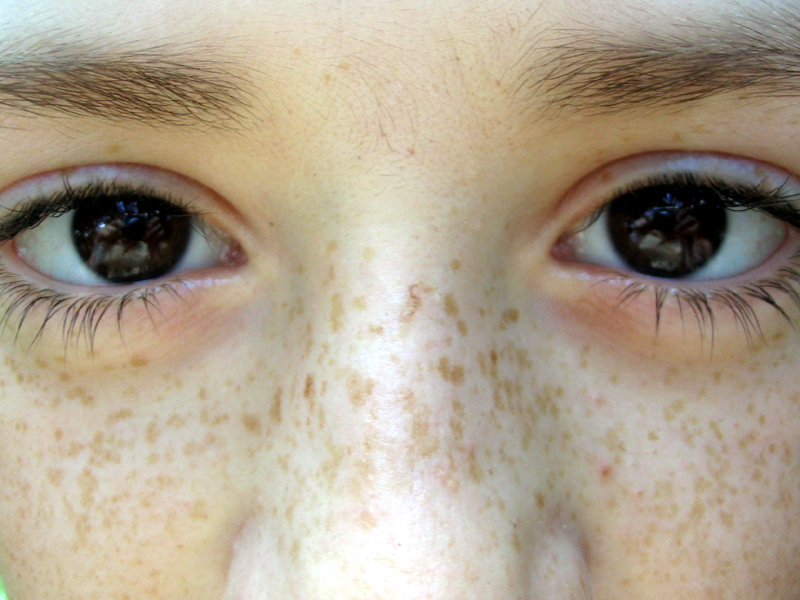Freckle
 From Wikidoc - Reading time: 3 min
From Wikidoc - Reading time: 3 min
| Freckle | |
 | |
|---|---|
| Freckles | |
| ICD-10 | L81.2 |
| DiseasesDB | 29235 |
| eMedicine | derm/121 |
| MeSH | D008548 |
Editor-In-Chief: C. Michael Gibson, M.S., M.D. [1]
Overview[edit | edit source]
Freckles are small colored spots of melanin on the exposed skin or membrane of people with complexions fair enough for them to be visible.
Having freckles is genetic and is related to the presence of the melanocortin-1 receptor MC1R gene variant, which is dominant. Freckling can also be triggered by long exposure to sunlight, such as suntanning. When the sun’s rays penetrate the skin, they activate melanocytes which can cause freckles to become darker and more numerous, although the distribution of melanin is not the same. Fair hair such as blonde, or more commonly red hair, are usually common with the genetic factor of freckles, but none so much as fair or pale skin.
Freckles are predominantly found on the face, although they may appear on any skin exposed to the sun. Freckles are rare on infants, and more common on children before puberty; they are less common on adults.
Children who do not produce enough melanin to protect their skin against harmful rays from the sun develop temporary freckles associated with childhood that usually go away upon puberty, once more melanin is produced. People with the fairest skin often do not produce enough melanin, and so freckles are present after puberty and into adulthood, indicating that individual as a genetic carrier for freckles.

Upon exposure to the sun, freckles will reappear if they have been altered with creams or lasers and not protected from the sun, but do however fade with age in some cases. Freckles are not a skin disorder. People with a predisposition to freckles may be especially susceptible to sunburn and skin cancer, and should therefore take extra care to protect themselves in the sun with a daily sunblock of at least 15 SPF.
During the Middle Ages and up until the early 15th century in Europe, an excess of freckles ("witchmarks" or "witchspots") became associated with witchcraft and witche, most likely because of genetic pairing with red hair, also considered to be a quality of witches.[1]
Two types of freckles[edit | edit source]
Ephelides is a genetic trait. It’s used to describe a freckle that is flat, light brown or red, and fades in the winter. Ephelides are more common in those with light complexions and with the regular use of sunblock, can be suppressed.
Liver spot (also known as sun spots) are freckles that do not fade in the winter. Rather, they form after years of exposure to the sun. Lentigines are more common in older people.
References[edit | edit source]
See also[edit | edit source]
External links[edit | edit source]
cs:Piha
da:Fregne
de:Sommersprossen
eo:Lentugo
gd:Breac-sheunain
is:Freknur
it:Lentiggini
he:נמש
lb:Speechelen
nl:Sproet
nds:Sünnsprütten
fi:Pisama
sv:Fräknar
 KSF
KSF